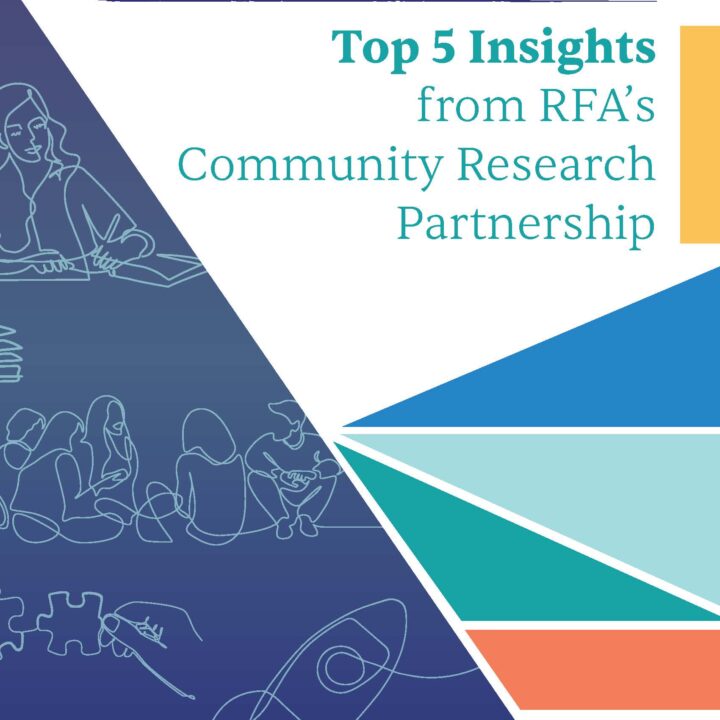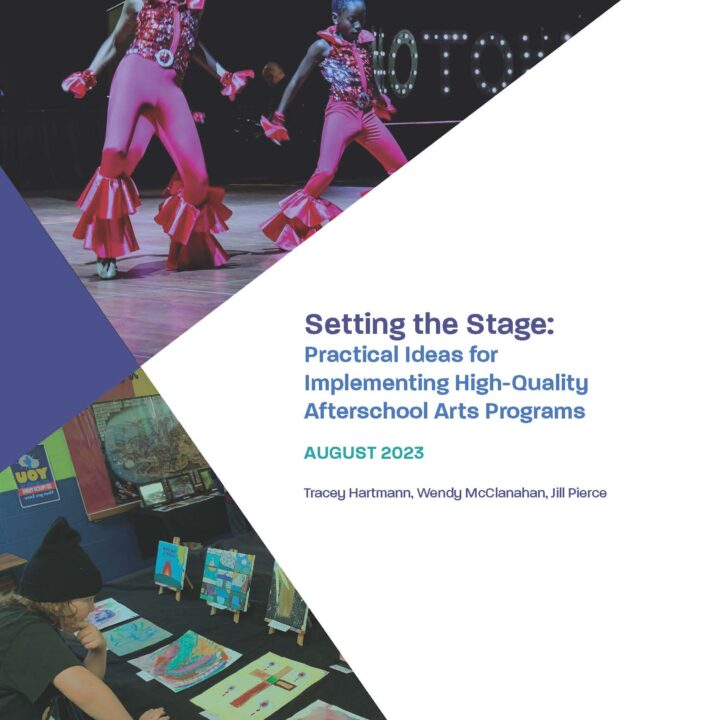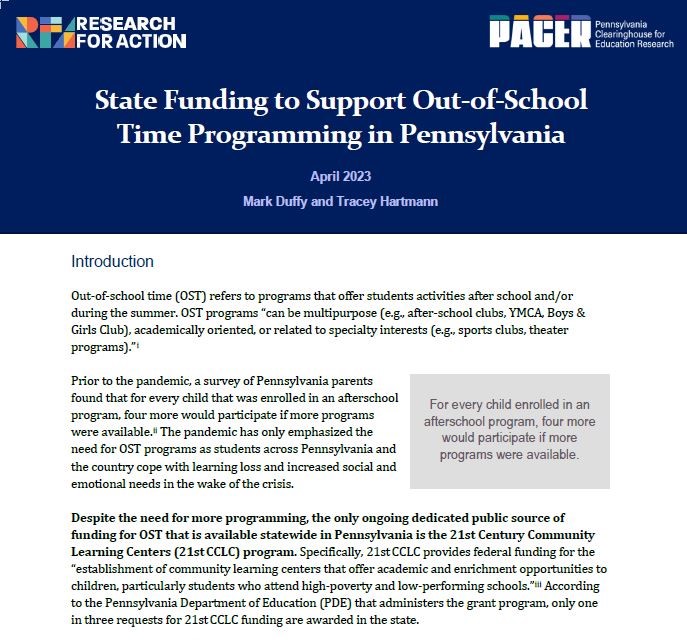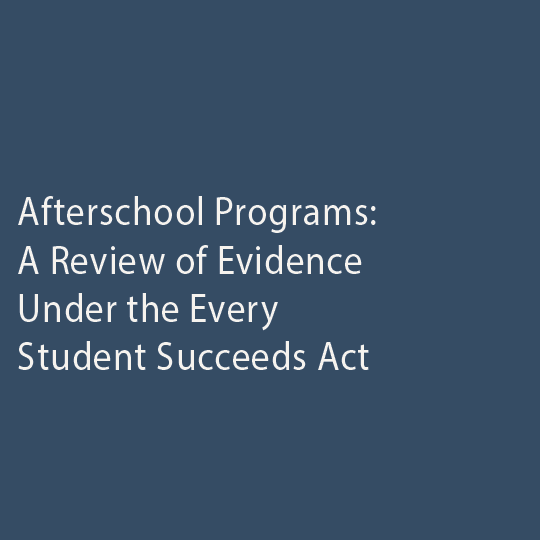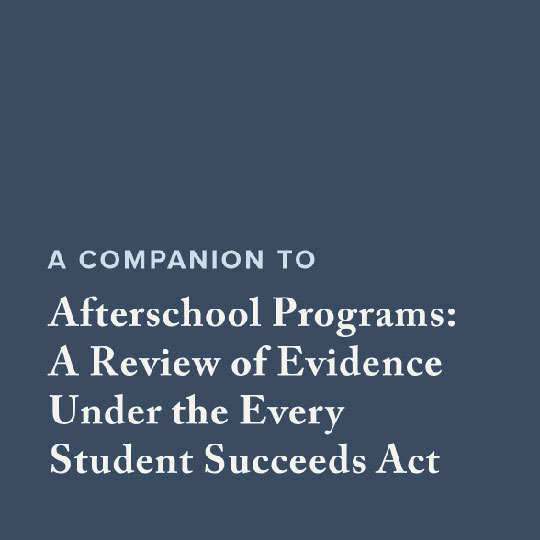The Wallace Foundation commissioned Research for Action and McClanahan Associates to study how out-of-school time intermediaries (OSTIs) responded to the COVID-19 pandemic and the role they could play in supporting communities moving forward. Citywide out-of-school time (OST) systems encompass a wide variety of afterschool and summer programs and associated provider organizations, youth participants, and their families. These systems were stretched during the COVID-19 pandemic and the national racial reckoning to respond to community needs in new and more equitable ways. Also impacted were OSTIs that manage OST systems within individual cities. OSTIs operate through various governance structures and perform a range of coordination functions intended to ensure quality, access, and equity in OST systems so that all youth have access to the unique out-of-school resources and opportunities they need to thrive.
This report draws on data from more than 100 interviews that gathered perspectives from OSTI staff and leaders, other system-level leaders, and OST providers in 12 cities. In addition, interviews with caregivers and surveys of OST providers were conducted in six of the 12 cities.
The research details the broad range of activities OSTIs conducted as they responded to the pandemic and finds that system-level leaders, OST providers, and caregivers perceived important benefits from their efforts. The pandemic highlighted the capacity of OSTIs to adapt to changing conditions and manage significant shifts in OST systems, such as the shift to virtual programming. They also played a critical role in advocating with local government and philanthropy to advance and sustain the OST system during this turbulent time. OSTIs also demonstrated the capacity to form strategic partnerships with social service agencies, public health and mental health agencies, and school districts to address economic, health, and educational inequities in support of families. Finally, the pandemic and the national racial reckoning highlighted and exacerbated ongoing racial equity gaps in the OST system. OSTIs began to work on several fronts to move the systems toward greater racial equity, including working more closely with smaller, grassroots OST provider organizations that were deeply connected to neighborhoods to enable them to access the available funding.
From the perspective of many system leaders, OST providers, and caregivers around the country, OSTIs contributed to the ability of cities, organizations, and families to navigate the crisis of the pandemic. The pandemic stretched OSTIs and shed light on OSTI’s flexibility and innovation. Continuing investments in OST coordination efforts will allow them to remain nimble, develop and nurture partnerships, and address equity in the OST system to create an enriching and healthy ecosystem where young people and their families can thrive.


